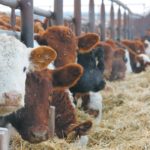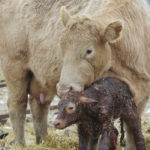Tag Archives beef cattle research council

How does your farm stack up?
Canfax research project provides the industry with benchmark figures

The right time for calving depends on your farm — and you
While many producers are calving earlier, some have gone the other way

Beef sector aims for new 2030 targets
Organizations involved in Canada's National Beef Strategy have announced new goals for the beef sector for the next decade

Veal farmers join national check-off agency
Fees were already being collected, but now Ontario farmers have more say in spending

Success with beef starts at the calf level
A veterinarian says farmers cut back on animal health as a cost saving

Preconditioning gives calves better start when entering feedlots
Calves that are properly vaccinated, given protein-rich feed and taught to use a waterer before leaving home tend to better manage feedlot stress

Livestock transport code of practice in the works
The code will cover cattle, pigs, poultry, sheep and equine for road transportation and should be completed by 2023

Producers should ensure calves suckle quickly after birth
Dystocia increases the chances that a calf will nurse on its own so producers may have to intervene



